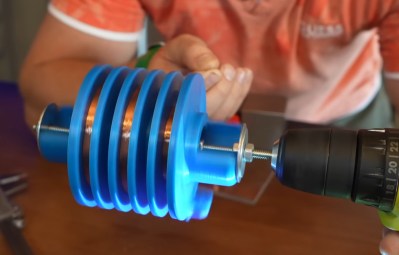Applying solder paste to a new custom PCB is always a little nerve-racking. One slip of the hand, and you have a smeared mess to clean up. To make this task a little easier, [Max Scheffler] built the Stencil Fix Portable, a compact self-contained vacuum table to hold your stencil firmly in place and pop it off cleanly every time.
The Stencil Fix V1 used a shop vac for suction, just like another stencil holder we’ve seen. The vacuum can take up precious space, makes the jig a little tricky to move, and bumping the hose can lead to the dreaded smear and colorful language. To get around this [Max] added a brushless drone motor with a 3D printed impeller, with a LiPo battery for power. The speed controller gets its PWM signal from a little RP2040 dev board connected to a potentiometer. [Max] could have used a servo tester, but he found the motor could be a little too responsive and would move the entire unit due to inertia from the impeller. The RP2040 allowed him to add a low pass filter to eliminate the issue. The adjustable speed also means the suction force can be reduced a little for easy alignment of the stencil before locking it down completely.
We love seeing tool projects like these that make future projects a little easier. Fortunately, [Max] made the designs available so you can build your own.
Continue reading “Portable Solder Paste Station Prevents Smears With Suction”


















